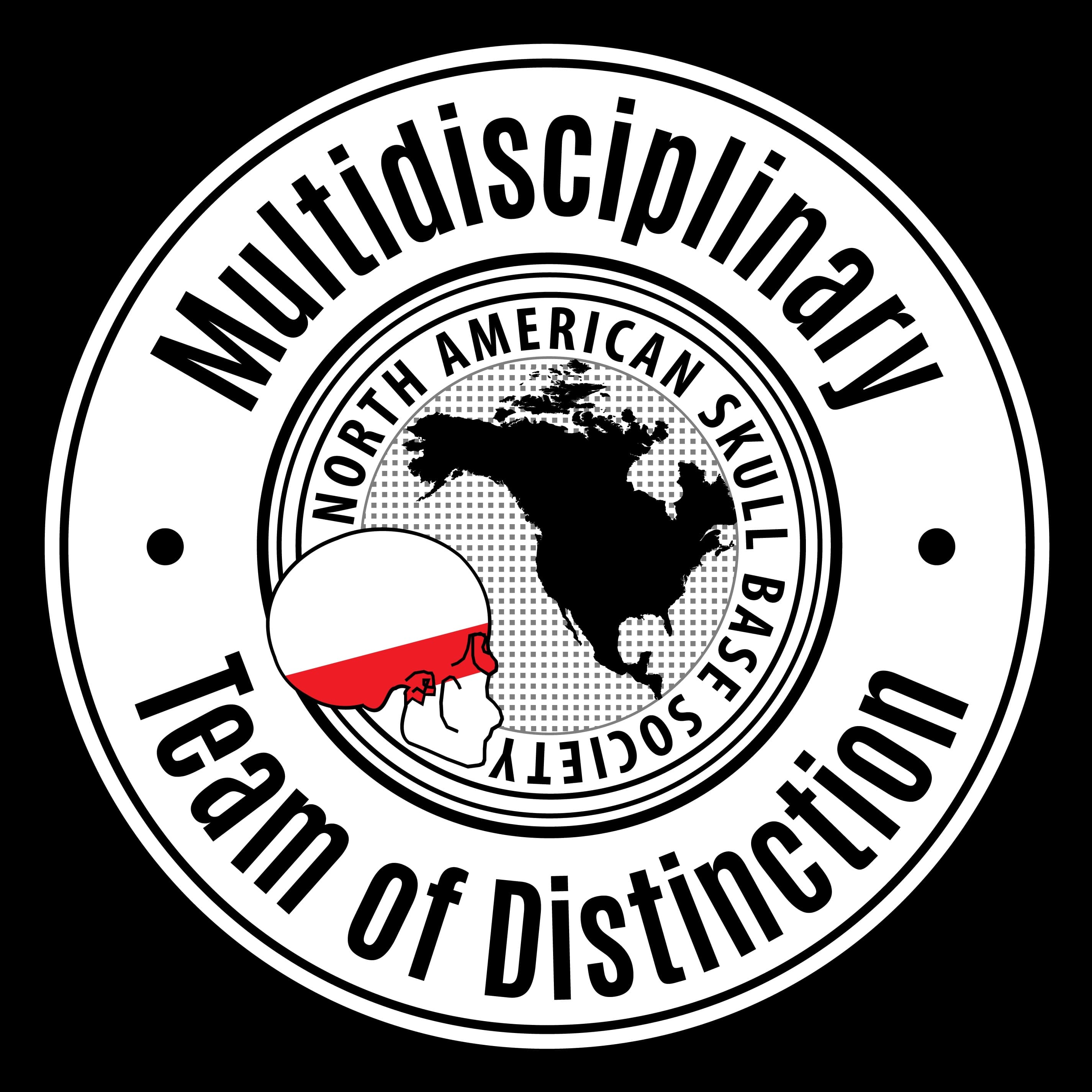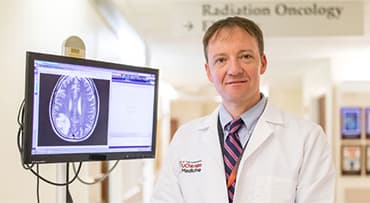Types of Skull Base Tumors
There are many diseases that affect the skull base, including benign (non-cancerous) tumors, cancerous tumors and infectious/inflammatory diseases. We can help identify your skull base condition and work with you to determine which treatment(s) will be best for your unique needs.
Benign (Non-Cancerous) Tumors
Benign tumors are not cancerous, meaning they don’t spread to other parts of the body. When these non-cancerous tumors grow in or around the skull base, they can push on important nerves and cause symptoms, including vision loss, or produce chemicals (hormones) that can create a variety of health problems.
The pituitary gland, located beneath the brain, directly under the vision nerves and behind the nasal sinuses, is considered the body’s “master gland” because it controls the function of many other hormone-producing glands. Pituitary adenomas are tumors (usually slow growing) arising from the pituitary gland. Because of their location next to optic nerves, they can press on these nerves and cause vision loss.
Some pituitary adenomas release hormones that cause conditions such as weight gain, high blood sugar and bone problems (due to extra steroid hormones). Alternatively, pituitary adenomas can also prevent the pituitary gland from producing normal hormones. Typically, pituitary adenomas are treated with minimally invasive endonasal surgery to remove the adenoma, though some are treated with radiation or medication. Learn more about pituitary and neuroendocrine disorders.
Schwannomas are benign, slow-growing tumors that arise from the supporting cells around the nerves leaving the brain and spinal cord. Within the skull base, schwannomas most commonly grow from the nerve that controls balance (vestibular nerve). Because the balance nerve travels alongside the hearing nerve in the inner ear canal, these tumors can press on the hearing nerve and impair hearing on one side, cause ringing in the ear, and dizziness or vertigo.
The facial nerve (which controls facial movement) and brainstem (which transmits information from the brain to the body and back) are also nearby, so larger vestibular schwannomas may cause facial numbness or weakness, body tingling, imbalance or headaches. Patients with neurofibromatosis type 2, a rare inherited disease, often develop vestibular schwannomas on both sides of the head.
Vestibular schwannomas may be treated with surgery, radiation (stereotactic radiosurgery), or a combination of both. Surgery is often performed collaboratively between ear surgeons (otologists/neurotologists) and a neurosurgeon. Since these tumors are slow growing, doctors may monitor them with imaging before treatment is needed.Meningiomas grow from the surface coverings of the brain called the meninges. Most are benign, but some can behave more aggressively and grow faster, or recur after treatment. They typically grow outside of the brain and can compress the brain or spinal cord tissue, causing headaches, seizures and loss of smell or vision.
Meningiomas that grow under the brain (along the skull base) require special techniques and a skull-base team approach to be surgically removed. The specific approach must be tailored to the location of the tumor and the important structures nearby. Meningiomas can be treated with surgery, including minimally invasive procedures, or radiation (stereotactic radiosurgery).
Malignant Tumors
Malignant tumors, or cancers, occur when cells grow quickly and uncontrollably. Malignant tumors grow faster than benign tumors and can affect structures near their original growth site. They can spread (metastasize) to other areas of the body if left untreated. Treatment for these tumors tends to be more aggressive than for benign tumors, often combining surgery, radiation and medical treatment from a multidisciplinary team of physicians.
Congenital and Other Acquired Conditions
Some people are born with variations in their skull base bones that can lead to compression of the brain, spinal cord and nerves for vision, smell, hearing and balance. Gaps in the bone may also lead to leakage of fluid from the brain into the nose or ear. Common congenital skull base conditions caused by these variations include:

Multidisciplinary Team of Distinction
The Multidisciplinary Team of Distinction designation is based on meeting North American Skull Base Society (NASBS) membership criteria and may not be construed as a Medical Referral.
Read more
Cancer
Our cancer experts offer medical, surgical and radiation therapy options to treat the full range of cancer types, and with innovative treatments and leading-edge research, we're attacking cancer from every angle.

Neurosurgery
The experience, dedication to patients, innovative technologies and commitment to research excellence is what makes our neurosurgeons among the first in the region to adopt new, advanced surgical techniques.

Otolaryngology
Dedicated specialists in head and neck surgery, rhinology and otology offer the most innovative treatments for ear, nose and throat (ENT) disorders to meet each patient's needs with personalized care.
Find a Skull Base Tumor Location Near You
Request an Appointment
We are currently experiencing a high volume of inquiries, leading to delayed response times. For faster assistance, please call 1-888-824-0200 to schedule your appointment.
If you have symptoms of an urgent nature, please call your doctor or go to the emergency room immediately.
* Indicates required field
